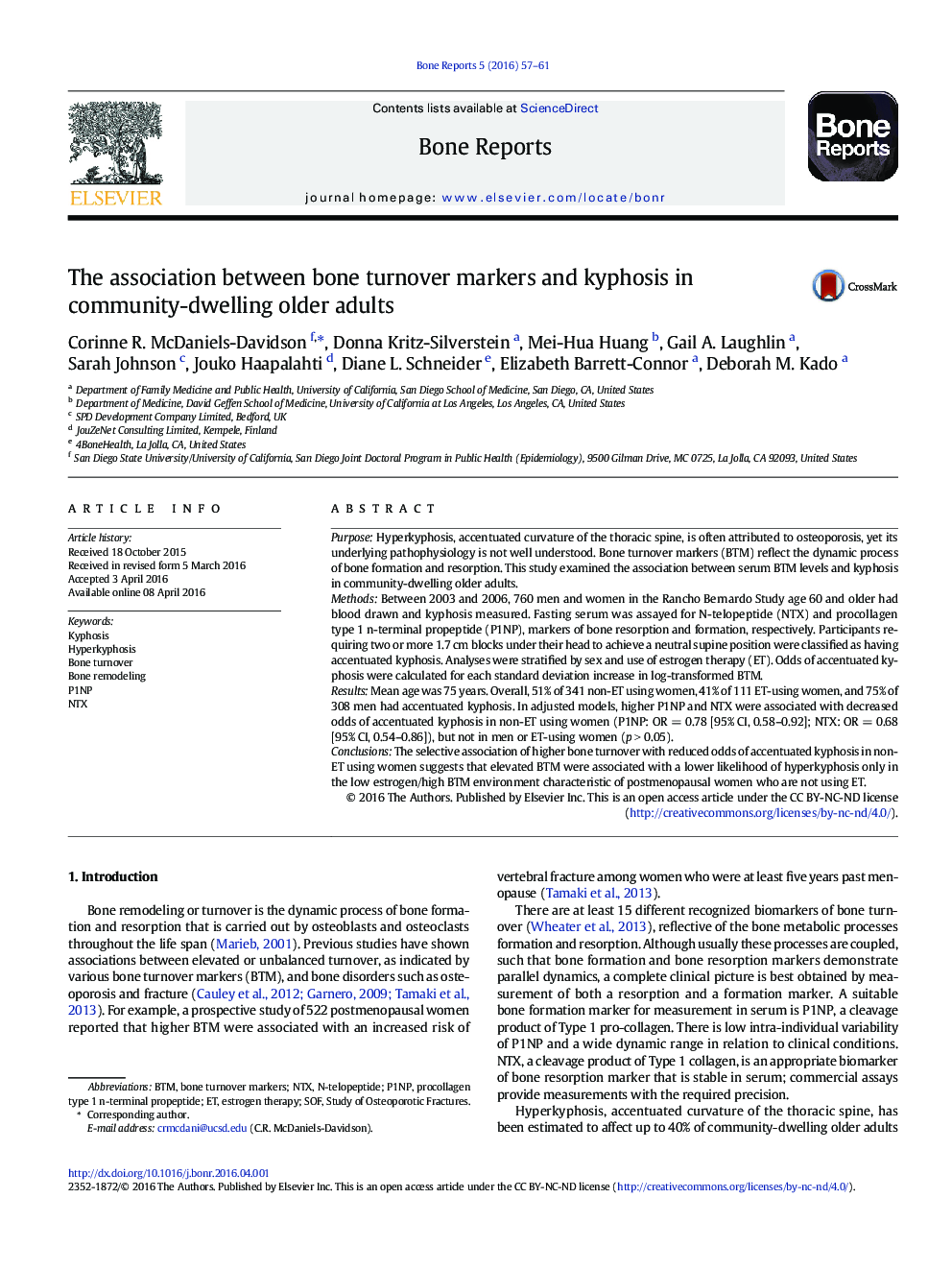| کد مقاله | کد نشریه | سال انتشار | مقاله انگلیسی | نسخه تمام متن |
|---|---|---|---|---|
| 2792301 | 1568667 | 2016 | 5 صفحه PDF | دانلود رایگان |
• The incidence of accentuated kyphosis was higher in men
• Higher P1NP and NTX are associated with decreased odds of accentuated kyphosis in non-estrogen using women
• Elevated BTM may correlate with less kyphosis in low estrogen/high BTM settings typical of postmenopausal women not using ET
PurposeHyperkyphosis, accentuated curvature of the thoracic spine, is often attributed to osteoporosis, yet its underlying pathophysiology is not well understood. Bone turnover markers (BTM) reflect the dynamic process of bone formation and resorption. This study examined the association between serum BTM levels and kyphosis in community-dwelling older adults.MethodsBetween 2003 and 2006, 760 men and women in the Rancho Bernardo Study age 60 and older had blood drawn and kyphosis measured. Fasting serum was assayed for N-telopeptide (NTX) and procollagen type 1 n-terminal propeptide (P1NP), markers of bone resorption and formation, respectively. Participants requiring two or more 1.7 cm blocks under their head to achieve a neutral supine position were classified as having accentuated kyphosis. Analyses were stratified by sex and use of estrogen therapy (ET). Odds of accentuated kyphosis were calculated for each standard deviation increase in log-transformed BTM.ResultsMean age was 75 years. Overall, 51% of 341 non-ET using women, 41% of 111 ET-using women, and 75% of 308 men had accentuated kyphosis. In adjusted models, higher P1NP and NTX were associated with decreased odds of accentuated kyphosis in non-ET using women (P1NP: OR = 0.78 [95% CI, 0.58–0.92]; NTX: OR = 0.68 [95% CI, 0.54–0.86]), but not in men or ET-using women (p > 0.05).ConclusionsThe selective association of higher bone turnover with reduced odds of accentuated kyphosis in non-ET using women suggests that elevated BTM were associated with a lower likelihood of hyperkyphosis only in the low estrogen/high BTM environment characteristic of postmenopausal women who are not using ET.
Journal: Bone Reports - Volume 5, December 2016, Pages 57–61
